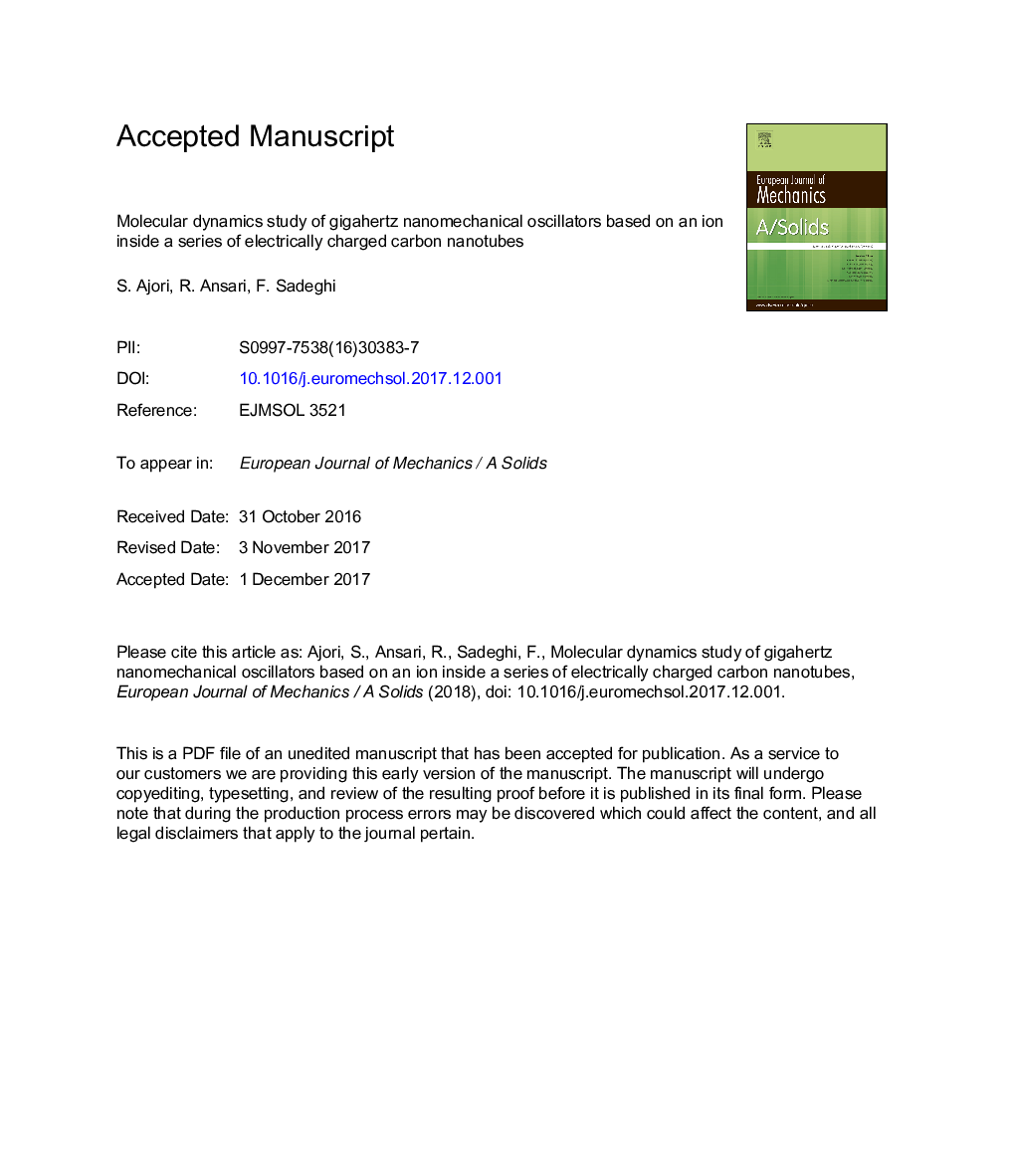| Article ID | Journal | Published Year | Pages | File Type |
|---|---|---|---|---|
| 7170240 | European Journal of Mechanics - A/Solids | 2018 | 24 Pages |
Abstract
In this paper, the mechanical oscillatory behavior of a chloride ion inside a series of electrically charged carbon nanotubes (CNTs) is investigated using molecular dynamics (MD) simulations. The Tersoff-Brenner and 6-12 Lennard-Jones (LJ) potential functions are respectively employed to describe the interatomic interactions between carbon atoms and van der Waals (vdW) interactions between ion and CNT, while the Coulomb potential function is used to model the electrostatic interactions between ion and electric charges. The outer shell which is assumed to be either uncharged or positively charged is composed of identical units located concentrically with an equal distance. Two different cases named cases 1 and 2 are considered to incorporate the electrostatic interactions into the model. In the first one, both left and right ends of all units are electrically charged, whereas in the second one, only the left end of the left-most unit and the right end of the right-most unit are electrically charged. Numerical results are presented to examine the effects of type of decoration of electric charges and their magnitudes, geometrical parameters (number of units, length and radius of units and the distance between two neighboring units) and initial conditions (initial separation distance and initial velocity) on the dynamic behavior of system. A comparison is also made between the results of cases 1 and 2 with those of uncharged units. For given initial conditions, it is demonstrated that the oscillation frequency of case 1 is lower than that of case 2 and higher than that of pure nanotubes. It is further found that the highest escape velocity corresponds to case 1 followed by case 2 and uncharged nanotubes.
Related Topics
Physical Sciences and Engineering
Engineering
Mechanical Engineering
Authors
S. Ajori, R. Ansari, F. Sadeghi,
